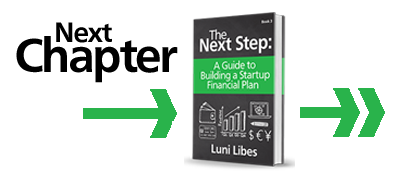Two steps forward, one step back…
What does it cost to produce one unit of production?
To answer this question, separate out all of the variable costs involved in creating each unit of production (a.k.a. the cost of goods) from the fixed expenses required to run your company. We deal with each of these separately.
For example, back at that car company, their cost of goods includes the costs of all the parts plus the costs of the employees working on the assembly line. The design of the car, the factory, tooling, etc. are all fixed costs that do not change when one more car is sold.
At the airline, their cost of goods is the fuel, the salaries of the crew, and the landing fees at the airports. The airplane itself is a fixed expense that does not change if one more passenger is flown.
For the supermarket, the cost of goods is the wholesale costs of the items in the cart. The building, staff, and electricity are all fixed expenses that do not change if one more customer is served.
For the magazine, the cost of goods is the price of the paper and printing costs. The salaries of the writers, photographers, and editors are all fixed expenses.
At Google, the cost of goods is too small to measure. Delivering one page of search results and delivering one set of ads for one page view costs so little, it can be ignored. Almost all of the expenses are fixed expenses. However, if Google pays its ad sales force a commission on the sale of ads, then that would be included in the cost of sales.
For our lemonade stand, the cost of goods includes the ingredients that make up the lemonade plus the cup it is served in and the labor required to make and serve the drink. Everything else is a fixed expense.
If you are unsure about whether one of your expenses is part of the cost of goods or not, think about what happens if you make one extra unexpected sale. If that costs you a measurable amount of money, the expenses associated with that money are likely part of the cost of goods. If not, then they are a fixed expense.
Why split apart variable and fixed expense? Doing so helps you understand how your company scales. When sales double, usually cost of sales doubles as well, while fixed costs do not always go up as much. Sometimes this is obvious, like in the car company, where twice as many parts are needed.
However, also note that if car sales double, fixed costs may go up, as well, since it may not be possible to produce twice as many cars without expanding the factory that manufactures those cars.
The same is true for businesses like airlines and supermarkets and magazines. Doubling sales doubles expenses (cost of sales), but it may also require increasing fixed costs, such as adding more airplanes, more checkout lines, and more staff.
Even at companies like Google, where the cost of goods is too small to measure, doubling sales may involve more expenses, like more servers and less obvious expenses, like a larger staff that can provide more unique ads.











